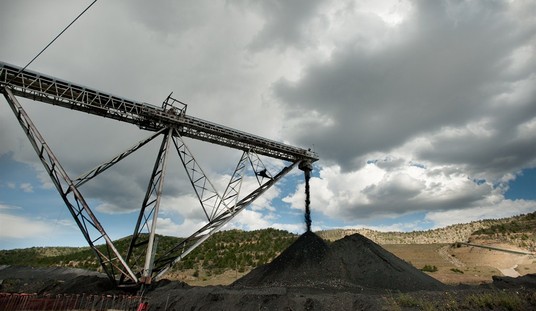Baseball has been overtaken by other professional sports in terms of fan interest. The recent World Series — a competitive one, including a New York team from America’s largest media market — had trouble competing for TV viewers against an NFL Sunday night football game. It is therefore not surprising that few people could identify the Major League Baseball player who set the record for most times stealing home in a single season (7), and most times carried off the field in a stretcher in his career (11), not including similar events while playing ball in the Army during World War II.
That player, who enjoyed a season and a half of extraordinary performance until the first of many head-on collisions with an outfield wall short-circuited his career, was Pete Reiser, sometimes known as the original “Pistol Pete.”
In his first full season as a starting outfielder with the Brooklyn Dodgers in 1941, Reiser won the National League batting title (.343) while leading the league in doubles, triples, runs scored, number of times hit by a pitcher, and slugging percentage. He was named a starter in the All-Star game, finished second in MVP balloting, and helped the Dodgers make it to the World Series for the first time in 21 years (where of course they lost to the Yankees in the first of five head-to-head defeats at the hands of the “Bronx bombers” during the next 13 seasons). The next season, Reiser was having an even better year, hitting .350, getting voted onto the All-Star team again, and pushing the Dodgers into a 6-game lead over St. Louis in the National League pennant race.
Then Reiser crashed into the wall, face first, in St. Louis in the 11th inning while trying to catch a long drive hit by Enos “Country” Slaughter, the ball rolling free for a game-ending inside-the-park home run and a Cardinals victory. Reiser missed only four games despite a serious concussion, but his hitting declined sharply when he returned, dropping over 100 points from his pre-collision average in the last third of the season. For that season, Reiser hit .310.
A late spurt (20 wins in 23 games) enabled the Cardinals to edge out the Dodgers for the pennant by two games.
For all practical purposes, the Pete Reiser story was almost over. Only one time did Reiser have 400 official plate appearances after 1942. He lost three years of his career to the Army, and when he retired in 1952, he had played in only 861 games over 10 seasons. There would be many more injuries, mostly due to collisions with outfield walls (not generally padded in the 1940s, hence the 11 times he was carried off the field), since that was the only way Reiser seemed to know how to play.
Upon his return to the game in 1946, he picked up right where he left off as he was considered the fastest player in baseball, once clocked at 9.8 seconds in the 100-yard dash.
He showed that speed with an NL high of 34 steals.
Injuries again were an issue though, as a gruesome late season wall collision saw him carted off the field on a stretcher with a separated shoulder, broken ankle, and a number of torn muscles.
His season was over.
The 1947 season paired Reiser with Jackie Robinson, and the two went on to finish first and second in stolen bases.
Again, however, his season was cut short by a crash into the outfield wall. This collision was so severe, in fact, that he was actually read his last rites while laying in the outfield at Ebbets Field.
The Dodgers still managed to win the pennant in ’47 and, despite the scary injury, Reiser started the first three games of the World Series. However, he was not himself as he misplayed several fly balls due to his rapidly developing vertigo.
By the next season, Reiser was no longer a starter as the injuries really started to take their toll on him. He had vertigo, he was dizzy all the time, and he was just not good enough to start anymore.
Bryce Harper of the Washington Nationals seems to have a bit of Pete Reiser in him, given his own early history of head-first style, though so far his career has not been derailed to the same extent by injuries. Harper has missed over 100 games in his first four seasons due to injury, but his batting numbers keep getting better, with a 2015 performance that won him the National League MVP award. Harper might want to read up on Reiser though, since playing with Pete Reiser-style aggression and hustle in the outfield, or on the bases, is not the key to longevity in major league baseball.
Leo Durocher was the Dodgers’ manager in Reiser’s first years in baseball, and later was manager of the Dodgers’ bitter rivals, the New York Giants, when Willie Mays was brought up in 1951. Durocher had this to say about Reiser and Mays in his autobiography “Nice Guys Finish Last”:
“There will never be a ballplayer as good as Willie Mays, but (Pete) Reiser was every bit as good, and he might have been better. Pete Reiser might have been the best ballplayer I ever saw. He had more power than Willie. He could throw as good as Willie. Mays was fast, but Reiser was faster. Name whoever you want to, and Pete Reiser was faster. Willie Mays had everything. Pete Reiser had everything but luck.” – Hall of Fame Manager Leo Durocher in “Nice Guys Finish Last” (04/01/1976, Page 431).
Reiser was also named one of the 100 greatest players in baseball history, remarkable given that he played only two full seasons and then partial seasons the rest of his career.
“In 1981, Lawrence Ritter and Donald Honig included him in their book “The 100 Greatest Baseball Players of All Time.” They used what they called “Smoky Joe Wood Syndrome” to explain why a truly exceptional player whose career was curtailed by injury—despite not having had career statistics that would quantitatively rank him with the all-time greats—should nevertheless be included on their list.”
Derrick Rose, the star guard of the Chicago Bulls, has had his own string of injuries since his MVP season in 2010, and his pattern of consistent bad luck reminds one of Reiser.
Rose missed all of the 2012 season and most of 2013, and he also missed a significant number of games in 2011 and 2014. Rose has yet to return to his 2010 MVP form, but he is still a high-quality player when he is in the lineup, and could play many more seasons if he remains largely injury free. In any case, with his salary and Nike endorsement income totaling about $40 million a year, Rose’s financial circumstances, even if an injury ended his career, would be in a far different situation than the luckless Pete Reiser, who likely never earned a salary one thousandth as high as Rose.
Pete Reiser is the ultimate baseball “what might have been” story. But then again, that would mean Pete Reiser would have played like everybody else.









Join the conversation as a VIP Member